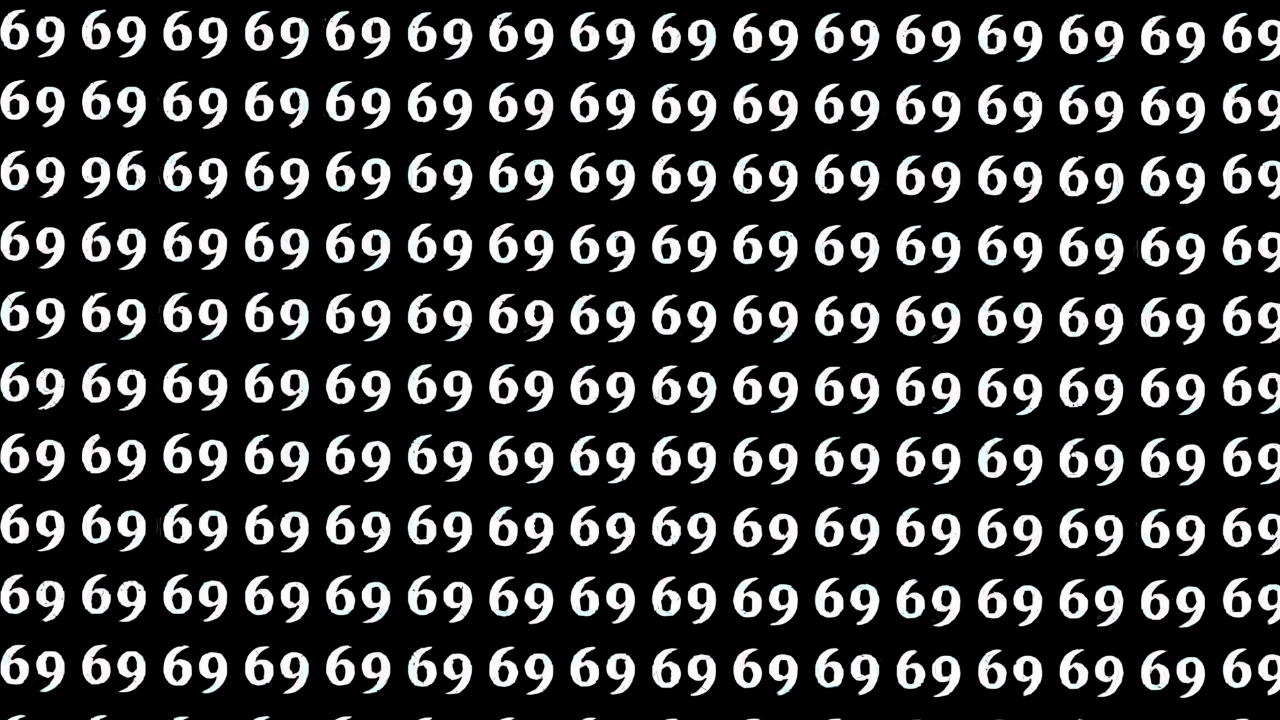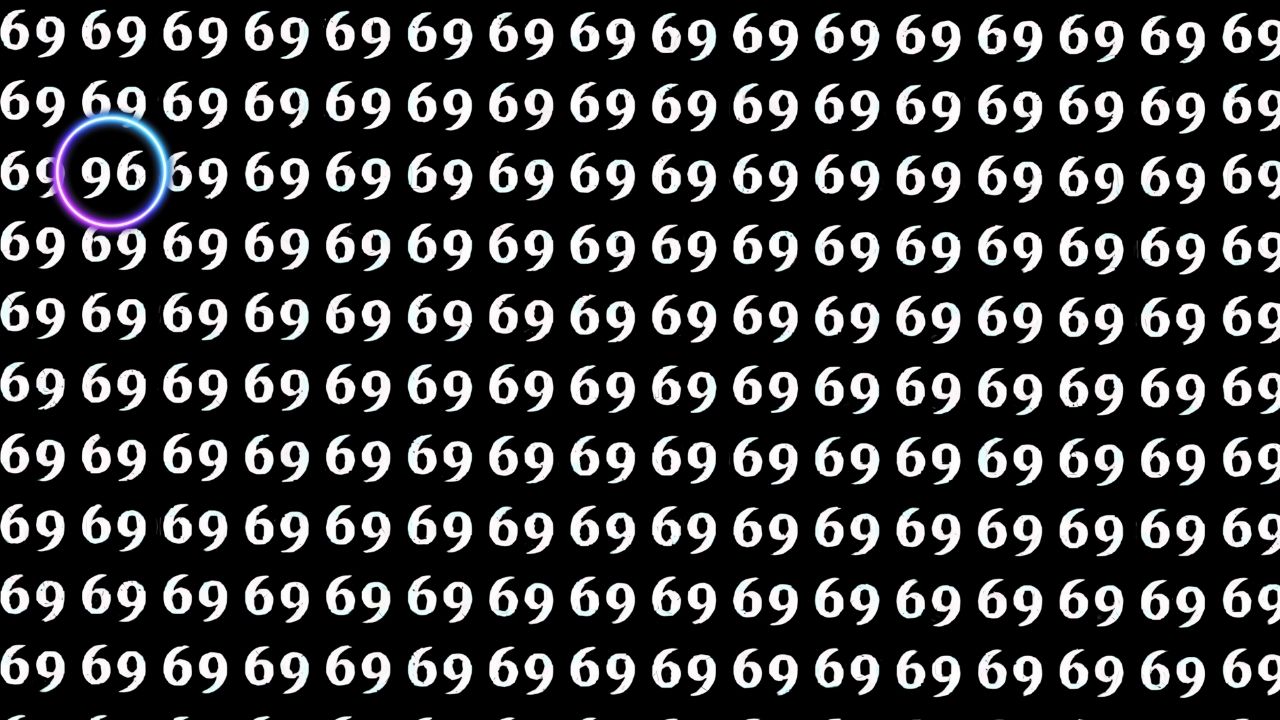Social media users are scratching their heads over the latest visual puzzle making waves across platforms. The challenge seems deceptively simple: locate the number 96 hidden among a sea of 69s within seven seconds. Yet thousands are finding themselves defeated by this tricky optical illusion that’s sparked heated debates in comment sections worldwide.
Why This Puzzle Has Gone Viral

The image in question features rows upon rows of the number 69 repeated in a grid pattern. Somewhere within this dense numerical maze lurks a single instance of 96, flipped and camouflaged among its mirror-image cousins. What makes this particular challenge so maddening is how the numbers 6 and 9 are essentially rotated versions of each other, creating a visual uniformity that confounds even the sharpest eyes.
Brain teaser enthusiasts have been sharing their completion times, with some claiming victory in under five seconds while others admit to spending several minutes hunting for the elusive digits. The puzzle has reignited conversations about pattern recognition, visual processing speed, and the quirky ways our brains can be fooled by simple typography.
The Psychology Behind the Challenge
Cognitive scientists explain that puzzles like these exploit our brain’s tendency to process information in chunks rather than scrutinizing every detail. When confronted with repetitive patterns, our visual cortex essentially goes on autopilot, making it remarkably difficult to spot the single anomaly. It’s the same principle that makes proofreading your own writing so challenging—your brain sees what it expects to see, not necessarily what’s actually there.
Dr. Sarah Mitchell, a neuroscientist specializing in visual perception, notes that these types of exercises can actually be beneficial. “They force us to slow down and engage our focused attention systems,” she explains. “In our fast-paced digital world, we’re constantly skimming information. Challenges like this remind us that careful observation still matters.”
Tips for Solving Visual Puzzles
Seasoned puzzle solvers recommend a systematic approach rather than randomly scanning the image. Try dividing the grid into quadrants and examining each section methodically. Some people find success by slightly unfocusing their eyes, allowing anomalies to “pop out” from the pattern. Others swear by scanning in a specific direction—left to right, top to bottom—to ensure no area goes unchecked.
Another effective technique involves taking brief breaks if you’re struggling. Often, returning to the puzzle with fresh eyes yields immediate results, as your brain resets its pattern expectations. And if you’re competitive about that seven-second time limit, practice definitely helps—your brain becomes better at recognizing these specific patterns with repetition.
The Answer Revealed

For those still searching, here’s the solution: the number 96 appears in the seventh row from the top, positioned roughly in the middle-right section of the grid. If you spotted it within the seven-second window, congratulations—you’ve demonstrated impressive visual processing skills. If not, don’t feel discouraged. The difficulty was intentional, and thousands of others have found themselves equally stumped.
The real value in these challenges isn’t just about winning or losing. They serve as entertaining reminders that our perception isn’t as reliable as we might think, and that staying mentally sharp requires regular exercise just like any other skill. So whether you found the 96 immediately or needed a hint, your brain got a worthwhile workout either way.



